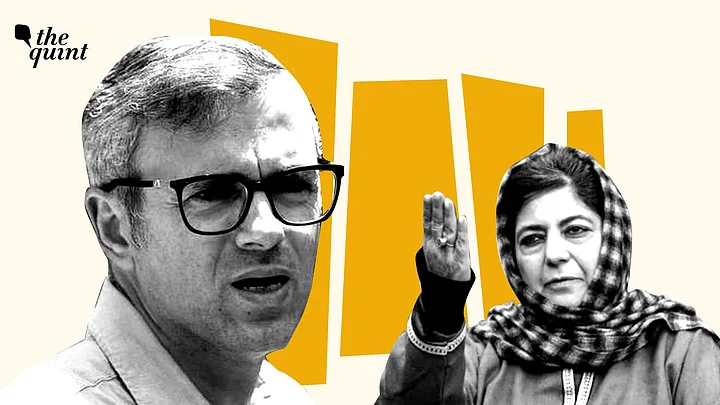The line-up of candidates for the Lok Sabha elections in Jammu and Kashmir shows that political patterns remain unchanged despite all the big talk of new beginnings which we initially heard from the central government.
The same political parties and leaders which dominated in the past are in the fray—National Conference versus PDP in the Kashmir Valley (or versus the People’s Conference in north Kashmir), while the Congress tries to unseat the BJP in the two Hindu-dominated constituencies around Jammu.
PDP chief Mehbooba Mufti is in a contest against National Conference Gujjar leader Mian Altaf for the strangely-crafted new constituency which includes south Kashmir and the Rajouri-Poonch region of the Jammu province—which are not contiguous. What has made that contest intriguing is the unexplained postponement of polling.
Apart from that and the interest in whether Sajad Lone will be able to best Omar Abdullah for the Baramulla seat, there is much speculation over whether long-time politician Lal Singh, now contesting on a Congress ticket, will be able to wrest the Udhampur seat from Jitendra Singh, Minister of State in the Prime Minister’s Office.
Sense of Ennui
But none of those contests mark a new pattern. There is no sign at all of the new beginning which was so vociferously spoken of almost five years ago.
Indeed, the contest for every seat is a repeat of 2019, the only difference being that top party bosses (Abdullah and Lone) are in direct contest for the Baramulla seat, and youth leaders Wahid Para and Agha Rohullah for the Srinagar seat. As if to seal the continuity, `Engineer’ Abdul Rashid, who got almost as many votes as PC last time, is contesting the Baramulla seat again—only this time from jail.
It’s almost as if nothing happened with regard to the state after the last Lok Sabha elections. And yet, remember: the first major step the BJP government took after winning those elections hands down was to change constitutional provisions with regard to Jammu and Kashmir—amid much talk of a new, clean crop of politicians for a Naya Kashmir.
I have repeatedly said that deactivating Article 370 of the Constitution was the least of what was done. Reducing a state to two union territories was a far bigger step. But, of the five things that happened in that first week of August 2019, the sidelining of the political class of Jammu and Kashmir (not Ladakh) was potentially the most consequential.
For one thing, it was the only one of the five things that was popular, almost universally across the new union territory—except, of course, among the leading cadres of political parties.
Young citizens were jubilant. By and large, they had no sympathy for the hundreds of politicians who were locked up. For, as a class, they (and many of their elders too) thought of politicians in both Kashmir and Jammu (including BJP leaders) as corrupt, nepotistic, and worthless.
By and large, it was a correct assessment.
Most politicians in the Kashmir Valley remained locked up through that winter. Then, COVID kept them indoors. Soon after the lockdown, however, the senior-most of the politicians whose incarceration had been so popular were pulled out of mothballs and taken to New Delhi for a photo-op with Prime Minister Narendra Modi in June 2021.
Since that photo-op, the process of pushing ahead of the past has been inexorable—so much so that the BJP did not mention the constitutional changes in its manifesto.
What, in retrospect, was the point of that prolonged incarceration? After all, there was no hint of rebellion on the ground.
And what was the point of the then chief secretary’s cussed refusal to allow high-speed internet for far longer than any security agency thought necessary?
Just empty, pointless, negative optics to give the country a bad name?
Short-lived Beginning
To be sure, there was an effort to institute grassroots democracy, but it was half-hearted. After elections for panchayats and municipalities were held under Governor’s Rule in October 2018, many of the newly elected grassroots representatives kept getting locked up—literally—allegedly for their own security.
Only after a round of by-elections to fill uncontested seats, a couple of years later, did the local bodies become vigorously functional. They did quite well then, bringing to the fore dynamic, popular, and successful local leaders in some places.
Instead of nurturing that trend, elections for fresh local bodies were indefinitely put off for no reason last autumn. The result: there have been no elected representatives at all in the union territory for several months, and the groundswell of public enthusiasm for grassroots democracy has been wasted.
Just as with the incarceration of politicians, one is left wondering: what was the point of initiating the third tier of elections in Jammu and Kashmir if the success of the process was to be nipped in the bud?
(The writer is the author of ‘The Story of Kashmir’ and ‘The Generation of Rage in Kashmir’. He can be reached at @david_devadas. This is an opinion piece and the views expressed above are the author’s own. The Quint neither endorses nor is responsible for the same.)
